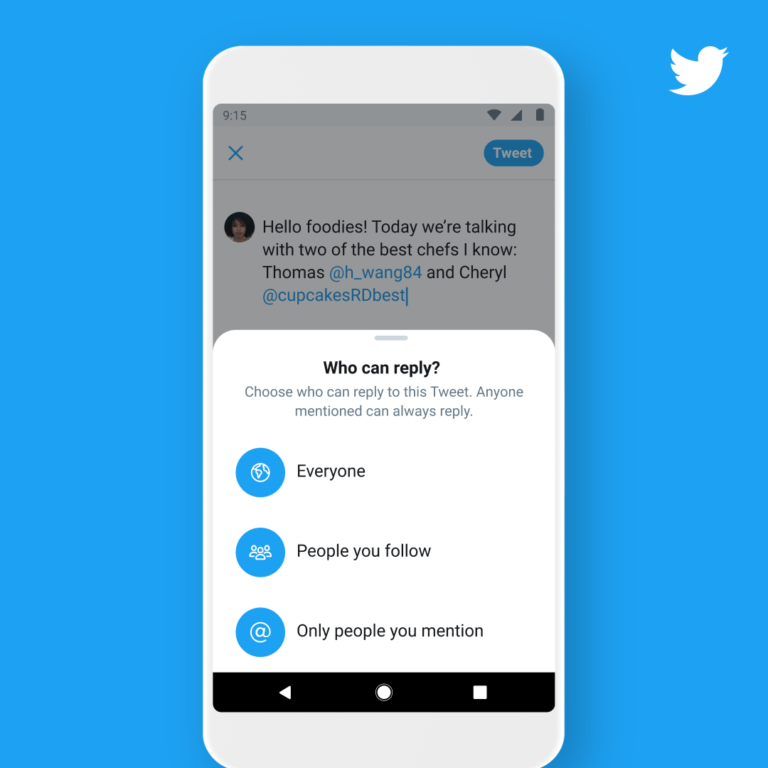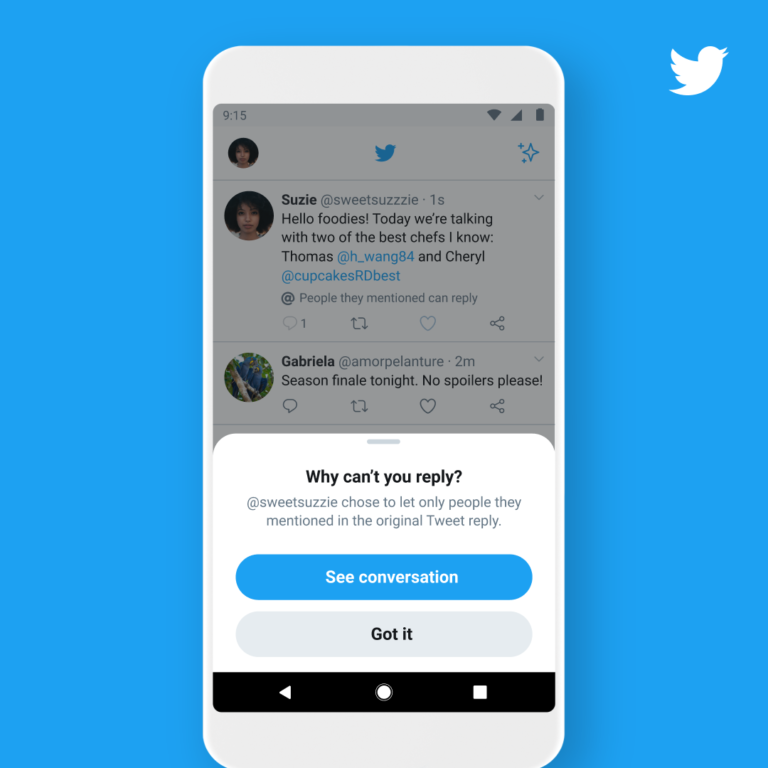Twitter is officially testing a new feature that allows users to prohibit entire groups of people from replying to individual tweets.
Unlike some test features that are rolled out unannounced, Twitter is actively encouraging people to try this one.
Testing, testing…
A new way to have a convo with exactly who you want. We’re starting with a small % globally, so keep your 👀 out to see it in action. pic.twitter.com/pV53mvjAVT
— Twitter (@Twitter) May 20, 2020
“Unwanted replies make it hard to have meaningful conversations,” Twitter states in an announcement.
To remedy that, Twitter is giving users the ability to choose who can contribute to a conversation.
‘Who Can Reply’ Setting
Users will be able to choose who can reply to a tweet as they’re composing it.
There are three setting to choose from:
- Everyone can reply
- Only people you follow can reply
- Only people you mention can reply
Other users will be able to see tweets with the latter two settings, but the reply button will be greyed out.
People who can’t reply to a tweet can still retweet it, retweet it with a comment, and like it.

Some Early Examples
A number of accounts are already having fun with these settings, which you can see in some early examples.
Here’s Twitter’s own communications team showing how you can use the settings to troll your followers:
reply if you want to be verified!
— Twitter Comms (@TwitterComms) May 20, 2020
Notice how the reply button is greyed out, indicating replies have been restricted for that tweet.
Here’s Twitter’s main account drawing attention to the new settings with this braggadocios tweet:
Reply if there’s a better app
— Twitter (@Twitter) May 20, 2020
A little SEO humor for everyone in this next example.
Technically, no one can argue with this statement, can they?
#SEO is dead.. Reply if you disagree
— Russell McAthy (@therustybear) May 20, 2020
If you try to respond to one of these tweets by clicking the reply button, Twitter will tell you why you’re not allowed to comment.

Jokes Aside – Why Do This?
Other than for making a few jokes, what is this feature for?
In a thread, one of Twitter’s designers explains what these new conversation settings are intended for:
“In the real world, people have public conversations with friends, experts, and other intentionally chosen groups of people.
Control over who can participate allows for a variety of conversation types, including panel discussions, interviews, and public statements.
With this experiment, we intend to replicate some of this real-world control, but why?
We want to help people discuss sensitive topics, while feeling safe.
We want to help people discuss fascinating topics with experts, public figures, or friends, without interruption.”
Early Feedback
Early feedback suggests that users don’t share the same enthusiasm for these settings as Twitter does.
Many are throwing around the word “censorship,” and pointing out how limiting replies can further the spread of misinformation.
Basically this is a self gratification feature – only the people who agree with you can apply
= funny actually
Guess people don't really want to know if those pants make their ass look huge?— Shelley (@Theshells1111) May 20, 2020
This is a terrible idea! This new feature is actually empowering censorship and helping misinformation in many ways. You are damaging one of the best aspects of the twitter. I can see some reasons behind it, but it was not a smart move!
— RLWL (@ART457820423) May 20, 2020
All this will accomplish is people being able to post misinformation without being able to be corrected or criticized. We all absolutely hate it.
— CrackerJacker (@JackHasCrackers) May 20, 2020
Bear in mind that this feature is only in the testing stages. If early feedback is any indication, perhaps it won’t be sticking around for long.
Limited Test Group
Twitter is rolling out these settings to a limited number of accounts at first.
It’s unclear who the settings are rolling out to or how many people have access to them so far.
Regardless of who is able to actually use them, everyone will be able to see tweets published with these settings.
So, for a test feature, it has the potential to impact a large audience.
For more information see Twitter’s official announcement here.






![[SEO, PPC & Attribution] Unlocking The Power Of Offline Marketing In A Digital World](https://www.searchenginejournal.com/wp-content/uploads/2025/03/sidebar1x-534.png)